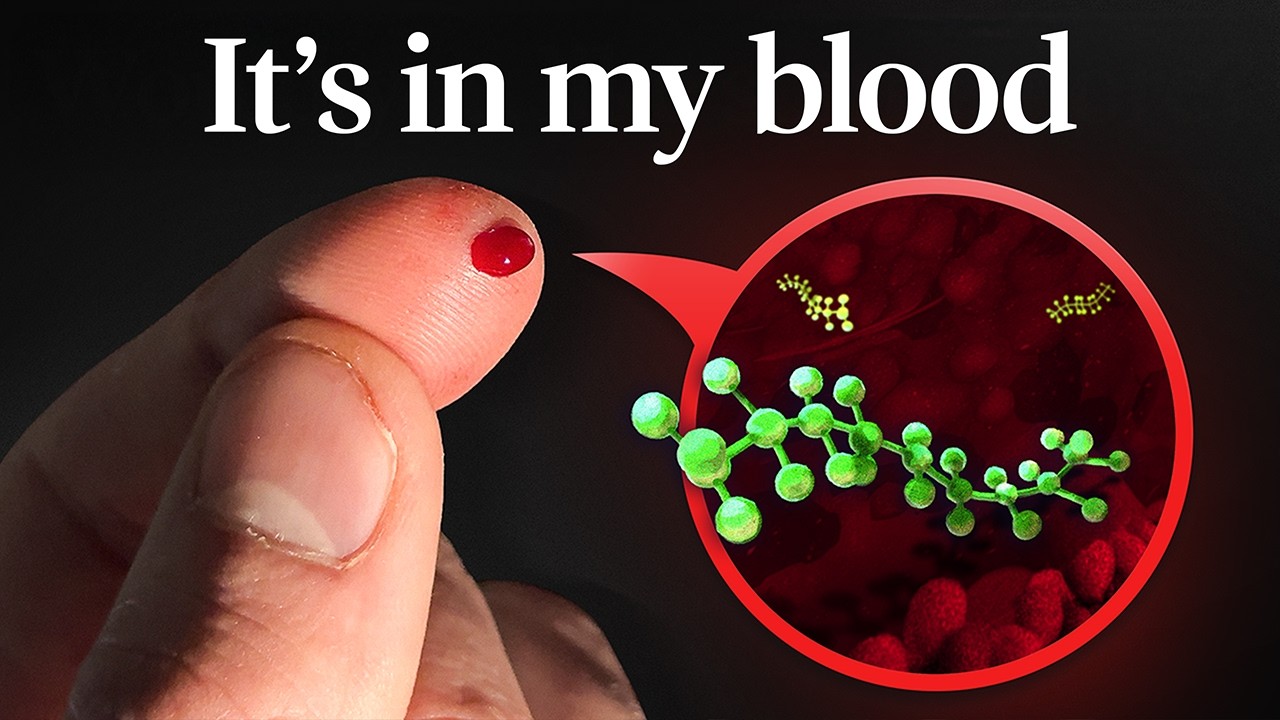How One Company Secretly Poisoned The Planet
At its core, this documentary unravels the complex and alarming story of PFAS – per- and polyfluoroalkyl substances – a class of man-made chemicals that have become ubiquitous in our modern world. The film uses the accidental invention of Teflon by DuPont scientist Roy Plunkett as a starting point. Plunkett wasn’t trying to cure blindness, nor did he invent a non-stick pan initially. He was working on refrigerants when he stumbled upon a strangely slippery, inert powder – Polytetrafluoroethylene, or PTFE, later trademarked as Teflon.
The documentary then meticulously traces how this “miracle” substance, along with the chemicals used to manufacture it, specifically PFOA (also known as C8), proliferated. It explores its myriad applications, from non-stick cookware and waterproof clothing to firefighting foam and industrial uses. However, the central argument, and the “blindness” connection, isn’t literal. Instead, it refers to a kind of corporate blindness and societal ignorance regarding the potential long-term health and environmental impacts of these incredibly persistent “forever chemicals.” The film investigates how these substances entered our environment and our bodies, and the decades-long journey of uncovering their harmful effects, often in the face of corporate denial or downplaying of risks.
Veritasium’s signature style is on full display here, and it’s incredibly effective.
- :The documentary masterfully blends archival footage – vintage advertisements for Teflon, old industrial films from DuPont and 3M, news clips – with crisp, modern-day interviews and compelling animations. The archival footage is particularly powerful, showcasing the initial enthusiasm for these chemicals without any understanding of their downsides. The animations are a standout, making complex chemical processes (like polymerization, covalent bonds, and the behavior of surfactants) remarkably clear and accessible to a lay audience. Scenes like the animated depiction of Roy Plunkett’s accidental discovery or the explanation of how C8 acts as a surfactant are both informative and visually engaging.
- The editing is sharp and keeps the narrative moving at a brisk but digestible pace. The film expertly weaves together historical timelines, scientific explanations, and personal stories (like that of farmer Earl Tennant and lawyer Robert Bilott). The pacing builds suspense as the story of PFAS contamination unfolds, mirroring the slow dawning of awareness about the problem.
- Derek Muller’s narration is, as always, excellent. He’s a clear, authoritative, and engaging guide through complex scientific and historical terrain. The interviews are crucial and well-chosen. Robert Bilott, the environmental lawyer who spent decades fighting DuPont, provides a powerful and credible firsthand account. The inclusion of experts like Andrew Patterson and the CEO of Puraffinity (Henrik Hagemann) adds scientific depth and a forward-looking perspective on potential solutions.
- The music is generally subtle but effective, often creating a sense of underlying unease or highlighting moments of revelation. It never overwhelms the information being presented.
The documentary excels in presenting a wealth of information with clarity and credibility.
- The scientific explanations are broken down into understandable components. Concepts like the strength of the carbon-fluorine bond (making these chemicals “forever chemicals”) and the mechanism of bioaccumulation are well-explained. The historical timeline of DuPont’s and 3M’s internal knowledge versus public statements is laid out with supporting documentation.
- The use of internal company documents, highlighted and annotated on screen, is a powerful tool for building credibility. These aren’t just assertions; they are backed by evidence. The interviews with key figures like Bilott, who directly accessed these documents, lend immense weight to the claims. The film also references peer-reviewed studies and reports from bodies like the National Academies of Sciences, Engineering, and Medicine.
- The central argument – that these widely used chemicals pose significant health and environmental risks that were known or suspected by manufacturers long before public awareness – is highly persuasive. The evidence presented, particularly the internal memos and animal studies showing adverse effects, is compelling. The film builds a strong case for corporate negligence and a failure of regulatory oversight.
- Multiple Perspectives/Counterarguments: While the film clearly takes a critical stance on the actions of companies like DuPont and 3M, it does briefly acknowledge the utility and initial “miracle” status of these chemicals. It also includes the perspective of companies like Chemours (a spin-off from DuPont) which are now developing alternative, supposedly safer chemicals (like GenX), though the film also raises questions about the safety of these new alternatives. The film doesn’t shy away from the complexities, such as the fact that PFOA itself is no longer used in Teflon production by major manufacturers, but the problem of existing contamination and the broader class of PFAS remains.
This documentary is both thought-provoking and deeply unsettling.
- The story of Earl Tennant, the farmer whose cattle were dying from contaminated water, is heartbreaking and serves as a powerful human anchor to the larger scientific and legal narrative. Learning about the sheer ubiquity of these chemicals in everyday products and, consequently, in our own bodies, is alarming. It challenges viewers to reconsider the products they use and the trust they place in corporations and regulatory bodies.
- Attention-Holding: Yes, absolutely. The combination of historical intrigue, scientific explanation, personal stories, and the unfolding legal battle keeps you hooked. Derek Muller’s engaging presentation style and the well-paced editing ensure there are no dull moments. The demonstration of taking his and Gregor’s blood samples and the subsequent results showing their PFAS levels make the issue very personal and relatable.
I liked :
-
- Exceptional Clarity: Complex science is made accessible.
- Strong Evidentiary Basis: Use of internal documents and expert interviews is highly effective.
- Compelling Narrative: The historical and legal battles are as engaging as the science.
- Visual Storytelling: The animations and archival footage are top-notch.
- Relevance: Highlights an ongoing and widespread environmental and health concern.
- Call to Awareness (if not direct action): It definitely makes you think about what’s in your water and products.
- Bear in mind:
- Potential Overwhelm: The sheer number of PFAS chemicals and the scale of the problem could feel daunting, perhaps leaving some viewers feeling a bit helpless, though the film does touch on emerging solutions.
- Limited Focus on Solutions (initially): While it introduces Puraffinity’s work towards the end, the bulk of the film focuses on the problem. Some viewers might crave more depth on remediation or regulatory solutions earlier on.
- Company Rebuttals (Implicit): While internal documents are shown, a more direct, recent statement or interview from the companies involved (even if predictable) might have added another layer, though it’s understandable why that might be difficult to obtain or might derail the film’s focus.










